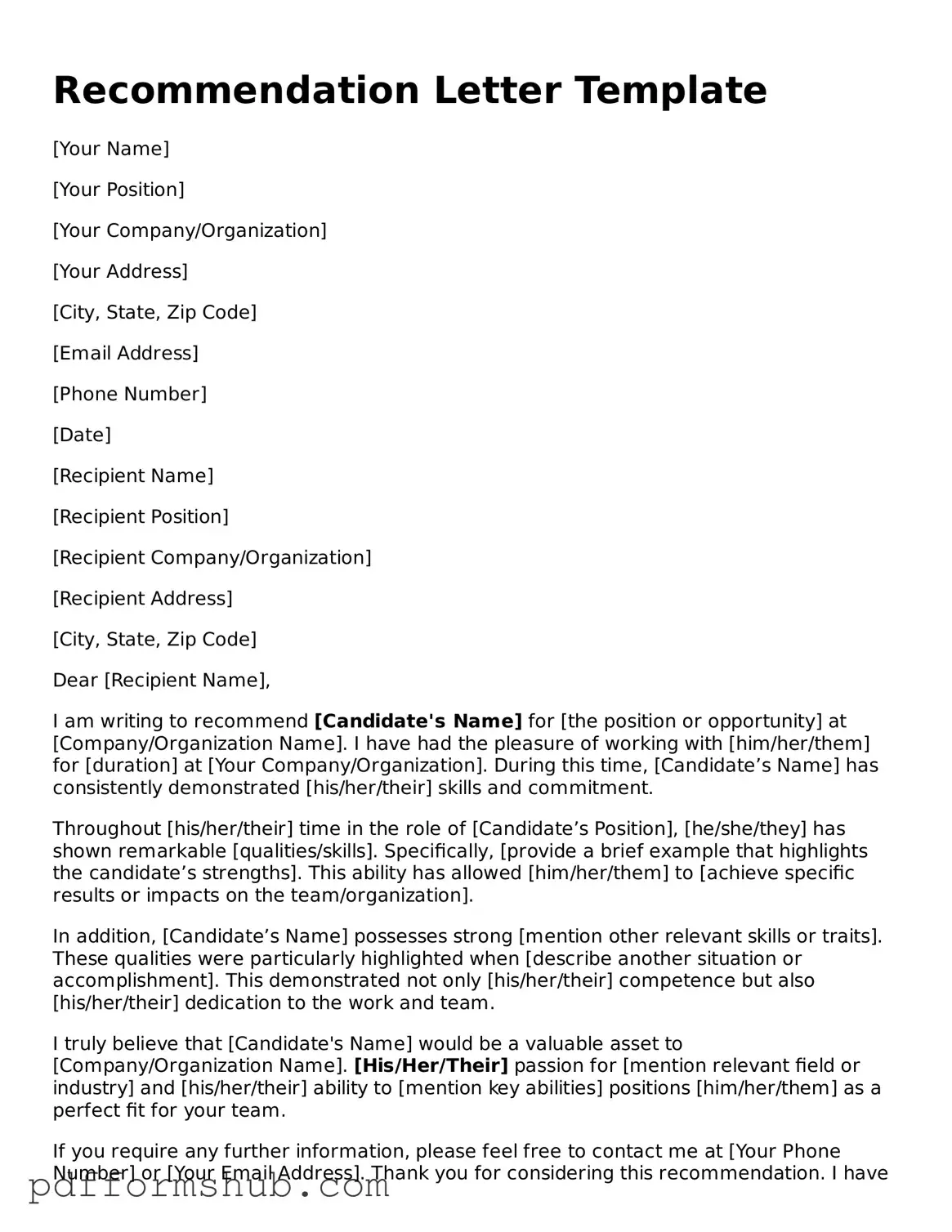When applying for jobs, schools, or other opportunities, a recommendation letter can play a crucial role in showcasing an individual’s strengths and qualifications. This form serves as a structured way for a recommender to provide insights about the candidate’s skills, experiences, and character. Typically, it includes sections for the recommender's information, the relationship to the candidate, and specific examples that highlight the candidate's abilities. The letter often concludes with a summary of the recommender's endorsement and contact information, allowing for further inquiries. A well-crafted recommendation letter can provide a personal touch, helping to differentiate a candidate from others. Understanding the components of this form can empower both the recommender and the candidate, ensuring that the letter effectively communicates the candidate’s potential and suitability for the desired position or program.
